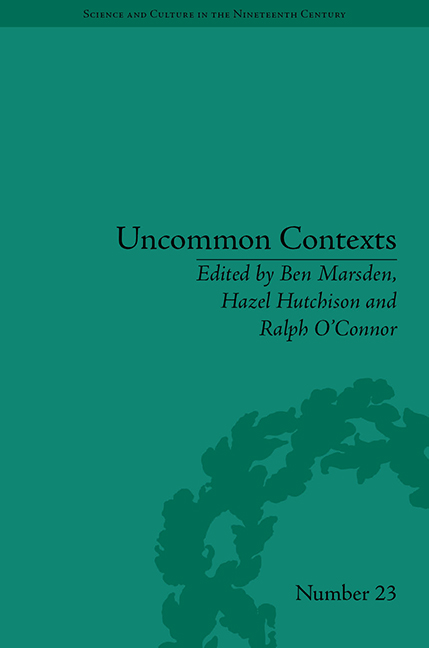Book contents
- Frontmatter
- Contents
- Acknowledgements
- List of Contributors
- List of Figures
- Introduction
- I Literary Genres of Science Writing
- II Pushing the Boundaries of ‘Literature and Science’
- 4 Re-reading Isambard Kingdom Brunel: Engineering Literature in the Early Nineteenth Century
- 5 Genre and Geometry: Victorian Mathematics and the Study of Literature and Science
- Part III Science and Technology in Fiction
- Notes
- Index
5 - Genre and Geometry: Victorian Mathematics and the Study of Literature and Science
from II - Pushing the Boundaries of ‘Literature and Science’
- Frontmatter
- Contents
- Acknowledgements
- List of Contributors
- List of Figures
- Introduction
- I Literary Genres of Science Writing
- II Pushing the Boundaries of ‘Literature and Science’
- 4 Re-reading Isambard Kingdom Brunel: Engineering Literature in the Early Nineteenth Century
- 5 Genre and Geometry: Victorian Mathematics and the Study of Literature and Science
- Part III Science and Technology in Fiction
- Notes
- Index
Summary
Numerous scholars have commented on the focus in literature and science studies on biological and earth sciences, their history, their texts and their terminology, and have noted that comparatively little attention has yet been given to the physical and above all the mathematical sciences. As Mary Poovey wrote in A History of the Modern Fact (1998), for the literary critic, ‘numbers constitute something like the last frontier of representation’. This essay uses a discussion of Victorian mathematical discourse to ask questions about the limits of historicist literature and science studies. It asks these questions by exploring Euclidean geometry, a kind of scientific knowledge which has been very notably neglected by literature and science studies, and which may be substantially resistant to the methods we generally use in this field. While non-Euclidean geometry has attracted some attention in Victorian literary studies, the Euclidean geometry which played such a large role in British mathematical education through the nineteenth century has barely been discussed in historicist literature and science scholarship. Its cultural history is not yet well explored. Yet among the branches of knowledge which were intimately connected with Victorian science, there are very strong reasons for considering geometry one of the most culturally influential.
Above all, it had extraordinarily wide dissemination in nineteenth-century culture, thanks to its zealously protected place in the education of a surprisingly large sector of the population.
- Type
- Chapter
- Information
- Uncommon ContextsEncounters between Science and Literature, 1800–1914, pp. 111 - 124Publisher: Pickering & ChattoFirst published in: 2014



